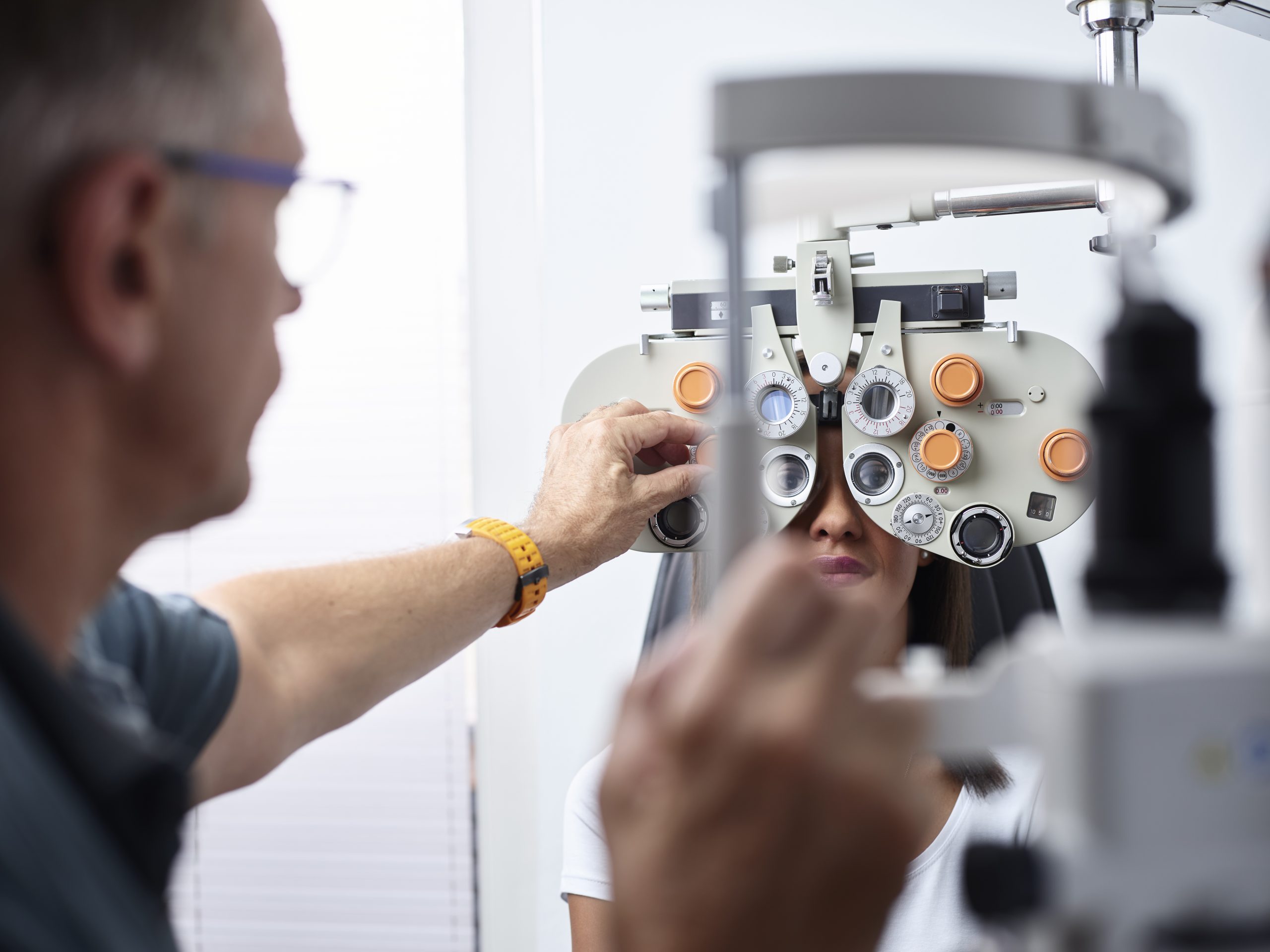Did you know that if you have a colour vision problem, or are colour blind, your colour perception can be improved?
Book an eye colour vision test assessment to discover which type of vision problem you have and discover the effect a specific tint can have on your colour perception. Tinted coloured spectacle or contact lenses can help colour stand out more. A specific tint can intensify and make colours appear more vibrant. 79% percent of people note a significant improvement in their colour vision perception, enabling more accurate identification of colours that were previously confused. 95% percent of people who have tried the system recommend it.
We assess colour vision using an Ishihara or a City Colour Vision or the Farnsworth D15 systems, as appropriate.
Here are common questions we are often asked about colour vision:
Why are some people colour blind?
Only 1 in 33,000 are truly colour blind in that they see in shades of grey - this is monochromatism. Most people who have a colour vision problem can see some colour.
Why do some people have this problem?
There are three type of colour vision receptors in the human eye – red, green and blue.
If all three are present in full, you have full colour vision – trichromacy.
If you are missing one colour receptor you are a dichromat.
If you are missing the long wavelength red receptor you are a protanope
If you are missing the mid wavelength green receptor you are a deutranope – this is the commonest cause of vision colour problems.
Both of these conditions – protanopia and deutranopia, result in a similar colour deficiency in the vision. Greens, reds, browns and oranges, purple are hard to perceive. It’s like being in a dark room and looking at these colours. You can tell they are different colours, but you cannot easily identify them.
Green looks like shades of brown, red can look like shades of yellow.
Here is a nice picture, courtesy of The Optician magazine showing how skittles and M&Ms look with full colour perception vs how a deutranope or protanope might see them

M&Ms seen in (a) normal colour, (b) as through deuteranope filter and (c) through a protanope filter

Skittles (fruit variety) seen in (a) normal colour, (b) as through deuteranope filter and (c) through a protanope filter.
If you are missing the short wavelength blue receptor, you are a tritanope and you might confuse orange with red, mid green with blue, light blue with grey or dark purple with black.
What causes a colour blind vision problem?
Red / green colour deficiency is a common inherited condition – it’s passed down from your parents and grandparents.
8% males or 1 in 12 and 0.5% females or 1 in 200 have a colour blind vision problem.
3 million people are affected in the UK – 4.5% of the population.
Genetics
Vision colour problems are X-linked. The 23rd chromosome is XY if you are biologically male and XX if you are biologically female. The vision problem is carried on the X chromosome. A biological female must have the vision problem gene on both of their X chromosomes to have a vision problem. If the vision problem gene is on just one of their X chromosomes, they will not suffer any problems, but will be a carrier. In other words, they can pass this onto their children. A biological male cannot inherit vision problems from the XY biological male. The XY biologic male can only pass the vision problem gene via their X chromosome onto a biological female.
Assuming the biologic male has full colour vision, if the biologic female has a vision problem, all the biologic male children will too, and any biologic females have a 50:50 chance of being a carrier. If the biologic female is a carrier, the biologic male children have a 50:50 chance of developing this problem. If the maternal grandfather has a vision problem with colour, the grandson is more likely to also have the same.
So if a colour deficiency vision problem runs in your family, make sure everyone related has a test so that they are aware and can adapt.
Blue/yellow colour problems with vision tend to be acquired – e.g. they can be due to long term diabetes, cataract, multiple sclerosis, macula degeneration, glaucoma, or some medications.
So, what can you do?
If you want to increase your colour perception, book a test. We will assess your vision with an Ishihara, City Colour Vision or Farnsworth D15 test. We then determine which specific tint will maximise your colour perception and make up some tinted glasses and / or tinted contact lenses to your specific requirements.
Ideally have your children’s eyes tested before they start school and make sure they include the Ishihara colour vision book to find out if there is a vision problem.
The most important thing is to be aware. Inform the teacher or line manager – so they can adapt the environment. Some examples are that it may be harder to tell if a strawberry or tomato is ripe, a steak is cooked how you like it, bananas are ripe (as it might be hard to tell if they are a bit green) and safety signs might not stand out.
Ensure good quality lighting – use day light / daylight bulbs
If you do have a vision problem, careers which require acute colour perception may be ruled out, for example electrician, pilot, ships captain, air traffic controller.
There may be a possible cure one day with gene therapy
Famous people who have a red green colour vision problem include Mark Zuckerberg – he chose the blue for Facebook as that colour popped the most for him – Bill Clinton, Christopher Nolan, etc.


